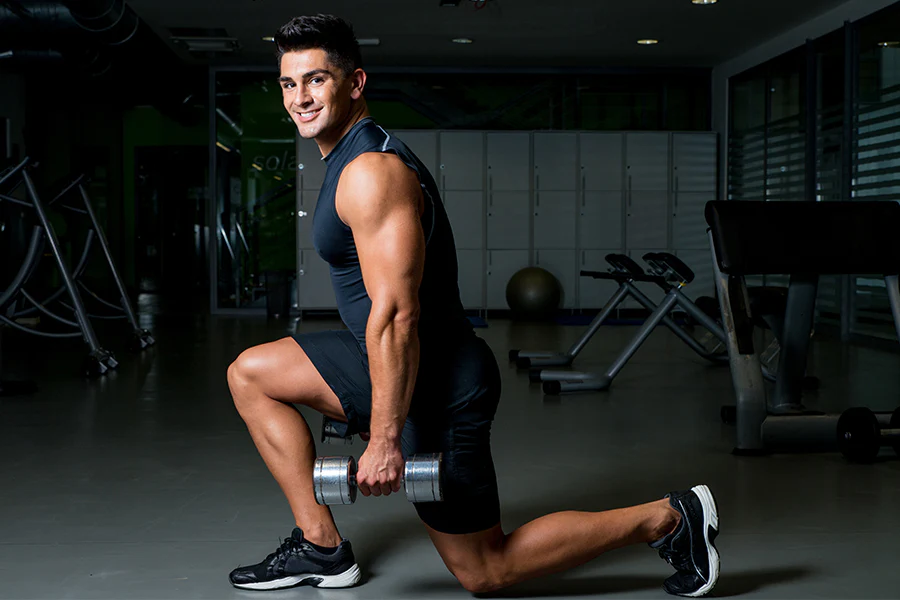Weights: The Ultimate Guide to Strength Training and Fitness

Introduction
Weight training, often referred to simply as “lifting weights,” is one of the most effective ways to build muscle, increase strength, and improve overall health. Whether you’re a beginner or an experienced lifter, understanding the fundamentals of weight training can help you achieve your fitness goals more efficiently.
This article will delve into the benefits of weight training, different types of weights, common exercises, and tips for creating a personalized workout routine.
The Benefits of Weight Training

Weights training offers numerous benefits that extend beyond just building muscle. Here are some of the key advantages:
- Increased Muscle Mass: Regular weight training stimulates muscle growth, leading to an increase in muscle mass and strength. This not only improves physical appearance but also boosts metabolic rate, helping you burn more calories even at rest.
- Improved Bone Density: Lifting weights puts stress on the bones, which encourages the body to increase bone density. This is particularly important as we age, as it helps prevent conditions like osteoporosis.
- Enhanced Joint Health: Strengthening the muscles around joints provides better support, reducing the risk of injury and improving overall joint health.
- Better Mental Health: Exercise, including weights training, has been shown to reduce symptoms of depression, anxiety, and stress. The sense of accomplishment from lifting heavier weights over time can also boost self-esteem and confidence.
- Cardiovascular Benefits: While weight training is primarily anaerobic, it still offers cardiovascular benefits. Exercises like deadlifts and squats can increase heart rate and improve cardiovascular health.
Types of Weights

Weight training can be done using various types of equipment, each with its own advantages and disadvantages. Here are the most common types of weights used in strength training:
1. Dumbbells
Dumbbells are versatile and can be used for a wide range of exercises, including bicep curls, shoulder presses, and lunges. They are available in various weights, making them suitable for both beginners and advanced lifters. Dumbbells also allow for unilateral training, which can help correct muscle imbalances.
2. Barbells
Barbells are long bars with weights attached at both ends. They are commonly used for compound exercises like bench presses, squats, and deadlifts. Barbells allow for the use of heavier weights compared to dumbbells, making them ideal for building strength and muscle mass.
3. Kettlebells
Kettlebells are cast-iron weights with a handle, resembling a cannonball with a handle. They are used for dynamic movements like swings, snatches, and cleans. Kettlebell training improves strength, endurance, and cardiovascular fitness simultaneously.
4. Weight Machines
Weight machines guide the movement of the exercise, making them easier to use for beginners. They are ideal for isolating specific muscles and provide a safer option for those recovering from injuries. However, they do not engage stabilizing muscles as free weights do.
5. Resistance Bands
Resistance bands are elastic bands that provide resistance when stretched. They are portable, lightweight, and can be used for a variety of exercises. Resistance bands are particularly useful for warm-ups, rehabilitation, and adding resistance to bodyweight exercises.
Common Weight Training Exercises

Weight training exercises can be divided into two main categories: compound exercises and isolation exercises. Compound exercises target multiple muscle groups at once, while isolation exercises focus on a single muscle group.
Compound Exercises
- Squats: Squats target the quadriceps, hamstrings, glutes, and lower back. They are considered one of the best exercises for overall lower body strength.
- Deadlifts: Deadlifts work the entire posterior chain, including the lower back, glutes, hamstrings, and traps. They are excellent for building overall strength and muscle mass.
- Bench Press: The bench press targets the chest, shoulders, and triceps. It is one of the most popular exercises for building upper body strength.
- Pull-Ups: Pull-ups target the back, biceps, and shoulders. They are a great exercise for building upper body strength and improving grip.
- Overhead Press: The overhead press targets the shoulders, triceps, and upper chest. It is a key exercise for developing shoulder strength and stability.
Isolation Exercises
- Bicep Curls: Bicep curls isolate the biceps, helping to build arm strength and size.
- Tricep Extensions: Tricep extensions target the triceps, helping to build the back of the arm.
- Leg Extensions: Leg extensions focus on the quadriceps, helping to build strength and muscle in the front of the thigh.
- Lateral Raises: Lateral raises target the deltoids, helping to build shoulder strength and width.
- Calf Raises: Calf raises isolate the calf muscles, helping to build strength and muscle in the lower leg.
Creating a Personalized Weight Training Routine

Creating a personalized weight training routine involves considering your goals, experience level, and available equipment. Here’s how to get started:
1. Set Clear Goals
Determine what you want to achieve with weight training. Are you looking to build muscle, increase strength, improve endurance, or lose weight? Your goals will dictate the type of exercises, sets, reps, and weights you should use.
2. Choose Your Exercises
Based on your goals, select a mix of compound and isolation exercises. Compound exercises should form the foundation of your routine, as they target multiple muscle groups and build overall strength. Add isolation exercises to focus on specific areas that need improvement.
3. Plan Your Workout Split
Decide how many days per week you can commit to weight training. Common workout splits include:
- Full-Body Workout: Training all major muscle groups in one session, typically done 2-3 times per week.
- Upper/Lower Split: Alternating between upper body and lower body workouts, typically done 4 times per week.
- Push/Pull/Legs Split: Dividing workouts into pushing movements (e.g., bench press), pulling movements (e.g., pull-ups), and leg exercises, typically done 3-6 times per week.
4. Determine Sets and Reps
The number of sets and reps you perform will depend on your goals:
- Strength: 4-6 reps per set with heavy weights.
- Hypertrophy (Muscle Growth): 8-12 reps per set with moderate weights.
- Endurance: 12-15+ reps per set with lighter weights.
5. Track Your Progress
Keep a workout journal or use a fitness app to track your exercises, sets, reps, and weights. Regularly review your progress and make adjustments to your routine as needed.
6. Focus on Proper Form
Proper form is crucial for preventing injuries and maximizing the effectiveness of your workouts. Take the time to learn the correct technique for each exercise, and don’t hesitate to seek guidance from a trainer or experienced lifter.
Tips for Safe and Effective Weight Training

- Warm-Up: Always start your workout with a warm-up to increase blood flow to your muscles and prepare your body for exercise. A warm-up can include light cardio, dynamic stretching, and mobility exercises.
- Progressive Overload: Gradually increase the weight, reps, or sets in your workouts to continue challenging your muscles and promoting growth.
- Rest and Recovery: Allow your muscles time to recover between workouts. Aim for 48 hours of rest for each muscle group before training it again.
- Nutrition: Fuel your body with a balanced diet that includes enough protein, carbohydrates, and healthy fats to support muscle growth and recovery.
- Stay Hydrated: Drink plenty of water before, during, and after your workouts to stay hydrated and maintain optimal performance.
Also read: The Rise of Organic Superfoods Drink Mixes
Conclusion
Weight training is a powerful tool for improving strength, muscle mass, and overall health. By understanding the different types of weights, exercises, and how to create a personalized routine, you can maximize the benefits of your workouts. Remember to stay consistent, track your progress, and prioritize proper form to achieve your fitness goals safely and effectively. Whether you’re lifting dumbbells, barbells, or kettlebells, weight training can help you build the strong, healthy body you’ve always wanted.